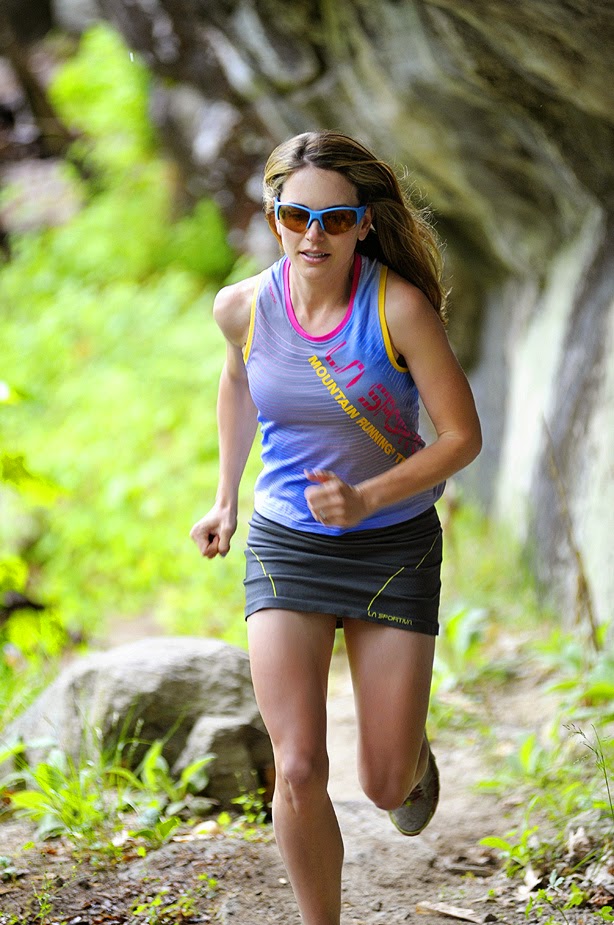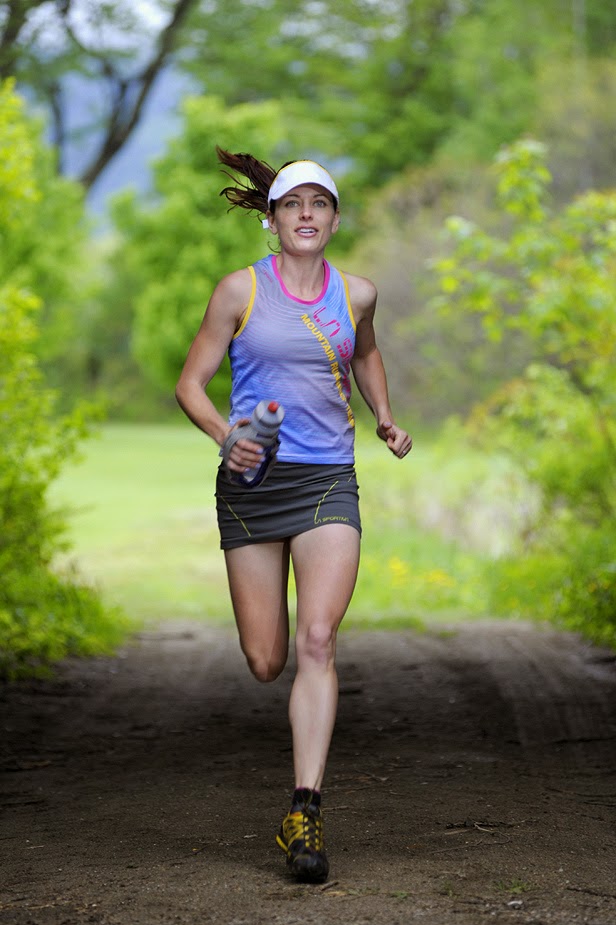Kristina Folcik
Ultra runner
Born: 1977
Lives: New Hampshire
Gluten-free since: 2013
Ultra runner Kristina Folcik and I unknowingly crossed paths out on the trails—she finished 15 minutes ahead of me at the Virgil Crest 50-miler in 2010 and 13 minutes ahead of me at the same race in 2011. But starting in 2012, she’s kicked her ultra running into seriously high gear, tallying at least eight first-place finishes, including at Traprock 50k, the NipMuck Trail Marathon, Terrapin Mountain 50k, a women’s course record at the Superior Sawtooth 100-miler, and most recently, a win at the very competitive Cayuga Trail 50-miler in June. Part of her success has been a switch to a gluten-free diet, and I caught up with the sponsored runner, part-time dental hygienist, running coach, and race director to ask what prompted the switch and how she’s feeling and performing now.
Pete Bronski: Clearly, you kicked your running into high gear starting in 2012.
Kristina Folcik: My goal used to be run an annual 50 miler, pretty much without training. That was fine until I ended up with a broken pubic bone and torn muscle in 2011. I had to rearrange my approach. I wanted to not only get better, but to start training. So I hired a physical therapist and a running coach. They gave me structure, kept me from being injured, and I ended up having a good year. But my nutrition didn’t come into play until this year. I used to eat donuts and junk before races, and had some serious GI issues.
PB: What did your diet used to look like?
KF: It wasn’t terrible, but it wasn’t great. I ate some vegetables. I tried vegetarian but that didn’t work out well for me. I felt lethargic and sick. Before races, I would eat a lot of pasta. Two nights before, I’d eliminate vegetables. I was trying to figure out why I had to go to bathroom or puke during races. I would literally stop a dozen times during a 50-miler to go to the bathroom, it was that bad. Then I started seeing a nutritionist. They said, ‘maybe you have gluten intolerance.’ So I cut it out and felt better.
PB: And so what does your gluten-free diet look like now?
KF: Mostly it’s just straight gluten–free. It’s hard because I love pasta, bread. But they’re making better products now. I don’t do a ton of starches. I eat meat—beef, fish. And tons of vegetables. Plus mostly corn-based products and rice in GF products.
PB: How did your body respond to the dietary switch?
Definitely my races have gone a lot better. Now I’m not stopping which is awesome. My energy levels are better. I used to feel bloated and tired. Now when I see something that looks good and cheat, I pay dearly for it for about a day.
PB: Did you go through the process of getting formally tested? Or was your body’s response to the gluten-free diet enough?
KF: That was enough for me. But I did just get diagnosed with hyperactive thyroid. I’m trying to fix that also through diet. But with the gluten-free, it has made a huge difference in my life overall. When I cheat every couple of months, whether it’s bread or pasta, I get bloating, GI issues, a lot of tiredness, just not feeling well.
PB: How sensitive are you to gluten now? What happens when you’re exposed?
KF: It depends. Smaller quantities are not that bad of an experience. Fish and chips aren’t too bad. But bread or cake, or a couple of weeks ago, when I had a piece of coffee cake, right away I get bloated, cramps in my stomach, and it takes about a day to feel good again.
PB: So how do you handle being gluten-free during racing, or even training?
KF: During races I have to bring my own food. The only stuff I’ll eat through aid stations, I might snag a banana. I do well with gels. I love dates; they’re one of my favorite race foods. I drink water and salt pills. Overall, I don’t eat a ton while I’m racing.
Traveling can be hard. In some states, it’s nearly impossible unless you go to the grocery store to find options. I try to bring my own stuff. When I’m on the road a lot, it’s hard. At a gas station, I might grab yogurt or nuts. Some restaurants do have GF options, such as Macaroni Grill. Some smaller restaurants, especially vegetarian and vegan restaurants, offer salads and stuff, but you have to be careful … watch for croutons or other bread products on the salad.
PB: Later this year you’ll be running your first gluten-free 100-miler, the Pinhoti 100 in Alabama. What are your aspirations for your running?
KF: I want to race internationally. It’d be fun to see the world and do it while running. And to inspire people … coming from being a middle to back of the pack runner to a pretty decent runner, it keeps you humble and helps you remember why you started doing it.
–Pete
Photos courtesy of Kristina Folcik, by Jay Philbrick Photography. Used with permission.


This is cool!